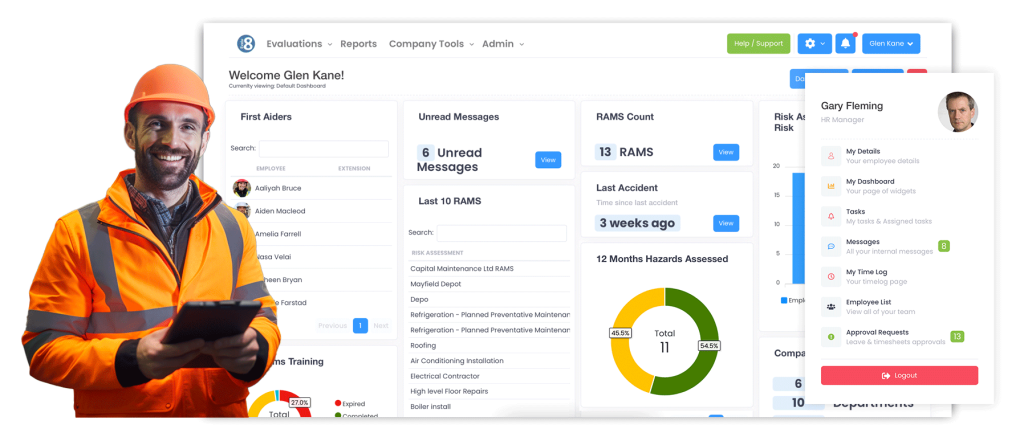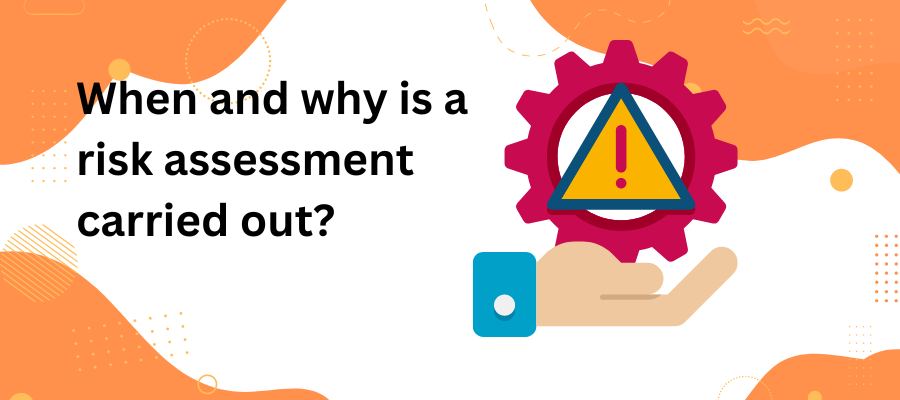A risk assessment is a crucial process that is carried out in various industries and contexts. It helps organisations identify, evaluate, and manage potential risks to ensure the safety of employees, assets, and the overall success of a project or business venture.
Understanding Risk Assessment
A risk assessment is a systematic examination of potential risks and hazards that may arise during a specific activity, project, or operation. It involves identifying and analyzing potential threats, evaluating their likelihood of occurrence, and assessing the potential impact they may have.
Definition of Risk Assessment
Risk assessment is the process of evaluating and assessing potential risks to determine the best course of action to prevent or minimize their impact. It involves identifying hazards, analyzing risk levels, and implementing control measures to reduce or eliminate risks.
Importance of Risk Assessment
Conducting a risk assessment is crucial for several reasons:
- Protecting Employees: By identifying potential hazards and implementing appropriate control measures, organizations can ensure the safety and well-being of their employees.
- Compliance with Regulations: Many industries have specific regulations and guidelines that require organisations to conduct risk assessments regularly.
- Cost Savings: Effective risk assessments help organisations prevent accidents, injuries, and damages, which can result in significant financial savings in the long run.
- Enhanced Decision-Making: By understanding and managing risks, organisations can make informed decisions that improve productivity, efficiency, and overall business performance.
When is a Risk Assessment Carried Out?
A risk assessment can be carried out at various stages of a project or business operation to ensure hazards are identified and managed effectively.
During Project Planning
During the initial stages of project planning, a risk assessment helps identify potential risks and develop strategies to manage them. This allows project managers to integrate risk management into the project plan effectively.
Prior to Major Business Decisions
Before making significant business decisions, such as introducing new products or entering new markets, organizations conduct risk assessments to evaluate the potential risks and make informed decisions.
In Response to Workplace Incidents
After workplace incidents, accidents, or near-misses, organizations should conduct a risk assessment to identify the cause of the incident and implement measures to prevent similar incidents in the future.
Why is a Risk Assessment Carried Out?
A risk assessment is carried out for several reasons:
To Identify Potential Hazards
The primary objective of a risk assessment is to identify potential hazards or situations that have the potential to cause harm or damage. By identifying these hazards, organizations can take preventive measures to minimize risks and ensure the safety of stakeholders.
For example, in a manufacturing facility, a risk assessment may identify potential hazards such as faulty machinery, hazardous chemicals, or inadequate safety protocols. By recognizing these hazards, the organization can implement safety measures such as regular equipment maintenance, proper handling and storage of chemicals, and training programs to ensure that employees are aware of safety procedures.
Furthermore, a risk assessment can also identify hazards that may not be immediately apparent. For instance, in an office environment, a risk assessment may reveal potential risks such as poor ergonomics, which can lead to musculoskeletal disorders. By identifying these risks, organizations can make necessary changes to workstations, provide ergonomic furniture, and educate employees on proper posture and stretching techniques.
To Prioritise Risks
Not all risks are equal in terms of severity or probability. A risk assessment helps prioritise risks based on their potential impact, allowing organisations to allocate resources appropriately and focus on addressing the most significant risks first.
For instance, in a construction project, a risk assessment may identify risks such as unstable soil conditions, adverse weather events, or inadequate safety measures. By prioritising these risks, the project team can allocate resources such as additional reinforcement for the foundation, contingency plans for weather-related delays, and strict adherence to safety protocols.
By prioritising risks, organisations can ensure that their efforts and resources are directed towards mitigating the risks that pose the greatest threat to the project’s success or the safety of individuals involved.
To Develop Risk Management Strategies
A risk assessment allows organisations to develop effective risk management strategies. By understanding potential risks and their potential impacts, organisations can implement control measures and develop mitigation plans to reduce or eliminate risks.
For example, in the healthcare industry, a risk assessment may identify potential risks such as patient falls, medication errors, or healthcare-associated infections. Based on these identified risks, healthcare organisations can implement strategies such as regular patient assessments, staff training on medication administration, and strict infection control protocols.
By developing risk management strategies, organisations can proactively address potential risks, minimize their impact, and ensure the safety and well-being of individuals involved.
In conclusion, a risk assessment is carried out to identify potential hazards, prioritise risks, and develop effective risk management strategies. By conducting a thorough assessment, organisations can take necessary precautions, allocate resources appropriately, and mitigate risks to ensure the safety and success of their operations.
The Process of Conducting a Risk Assessment
Conducting a risk assessment typically involves several key steps:
Identifying Hazards
The first step is to identify all potential hazards or situations that may pose a risk. This can be done through on-site inspections, reviewing incident reports, and consulting with employees and experts in the field.
Determining Risk Levels
Once hazards are identified, the next step is to assess the potential risks associated with each hazard. This involves considering the likelihood of an incident occurring and the potential impact it may have on people, property, and the environment.
Implementing Control Measures
Based on the risk assessment findings, control measures should be implemented to manage and reduce potential risks. These measures may include implementing safety procedures, providing personal protective equipment, or modifying work processes to minimize hazards.
In conclusion, a risk assessment is a crucial process that is carried out to ensure the safety of employees, protect assets, and make informed business decisions. By identifying potential hazards, prioritising risks, and implementing control measures, organisations can effectively manage risks and prevent incidents that may impact their operations. Conducting regular risk assessments is a proactive approach that helps organisations anticipate and mitigate potential risks, ultimately ensuring the well-being of all stakeholders and the successful accomplishment of project objectives.
Watch a 5 minute video of Evalu-8 EHS
“It has brought all of our health and safety under one roof and made it easy for me to see all the data”
Get to see exactly how our software can work within your current processes to help your organisation grow a positive safety culture.




